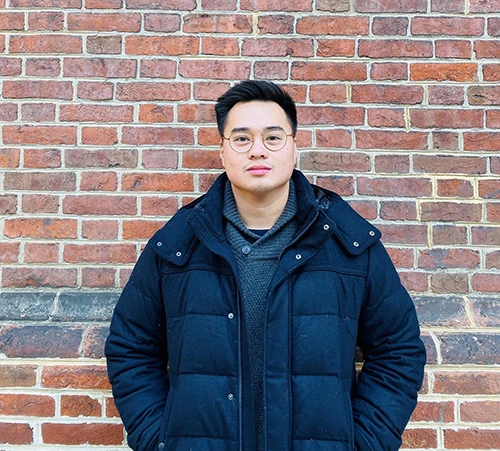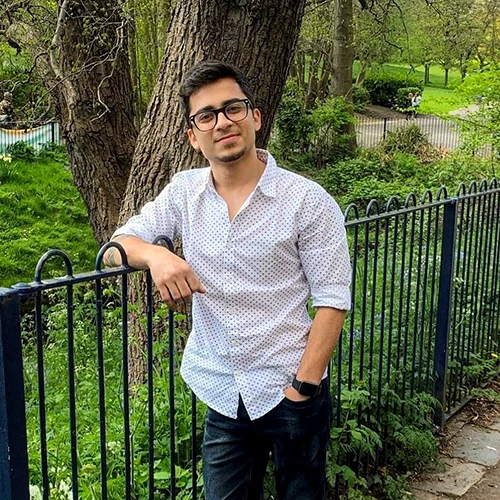Rhino 3D Training | The Parametric Architecture Masterclass
Grasp the sophisticated nuances of the advanced tools and cutting-edge techniques that have brought architectural masterpieces like Zaha Hadid's internationally acclaimed Heydar Aliyev Centre to life with unprecedented formal complexity and spatial innovation. Over our detailed 15-lesson journey, we'll systematically delve into the renowned Rhino & Grasshopper software combination, breaking down the complex computational processes that underlie awe-inspiring architectural feats that have redefined contemporary architecture. The intriguing designs of famous parametric architects aren't solely a result of their creative ingenuity, but also represent a deep understanding of sophisticated software tools and computational methodologies that allow their architectural imaginations to manifest in built reality.
- 9+ hours of premium content
- 15 step-by-step video lessons
- Future updates included
About this course
What sets our comprehensive course apart is our unwavering commitment to real-world application and professional-level skill development. Our focus isn't limited to theoretical knowledge or software demonstrations; instead, we systematically guide you through the practical application of these advanced design methodologies using actual architectural projects. By the end of this intensive course, you'll be well-equipped to craft your own fluid, intricate designs with confidence, mirroring the computational design prowess of world-class parametric architecture while understanding the underlying principles that make such complex forms buildable and structurally sound.
This advanced parametric design masterclass develops your expertise in creating complex architectural forms through systematic exploration of Zaha Hadid's iconic Heydar Aliyev Centre. You'll master sophisticated computational design methodologies using Rhino and Grasshopper that enable the creation of fluid architectural geometries while maintaining structural integrity and buildability throughout the design process.
The Heydar Aliyev Centre serves as the perfect learning vehicle for understanding how parametric design principles translate into built architectural reality. Through detailed analysis and reconstruction, you'll learn advanced surface generation techniques, structural system integration, and complex panelization strategies that bridge computational design innovation with practical construction requirements.
Advanced fabrication techniques include space frame development, curtain wall integration, and sophisticated cladding panel systems that demonstrate how complex parametric designs become buildable architectural projects. The course covers both theoretical parametric principles and practical implementation strategies that ensure design integrity throughout the construction process.
These specialized skills position you to tackle the most challenging contemporary architectural projects that require sophisticated computational design capabilities. The techniques learned apply directly to complex cultural buildings, cutting-edge commercial developments, and competition entries where advanced geometric modeling and comprehensive coordination are essential for realizing visionary architectural concepts.
What will you learn?
Loading lesson previews...
This course will turn you into:
A parametric architecture specialist
Master the sophisticated computational design methodologies that created Zaha Hadid's most iconic buildings through systematic exploration of advanced Rhino and Grasshopper workflows. Learn complex surface generation techniques, structural system integration, and space frame development that enable the creation of fluid architectural forms that challenge traditional construction approaches while maintaining structural integrity.
A computational design coordinator
Develop expertise in managing complex parametric definitions that control multiple building systems simultaneously including structural frameworks, cladding panels, and building services integration. Learn to create sophisticated scripts that maintain design relationships across all building components while enabling real-time design iteration and performance optimization throughout the development process.
A advanced fabrication strategist
Gain skills in translating complex parametric designs into buildable architectural systems through advanced panelization techniques, structural rationalization, and fabrication-ready documentation. Learn to bridge the gap between computational design innovation and practical construction realities while maintaining the design integrity of complex curved architectural forms.
Syllabus
We systematically open the course with a comprehensive lesson outlining what Parametric Modeling really represents in contemporary architectural practice and how to achieve sophisticated results through computational design thinking. We systematically debunk common myths around this advanced style of modeling and design while establishing clear foundations. We finish by breaking down Parametric Architecture into four essential elements that form the basis for all advanced computational design work, setting us up perfectly for comprehensive learning together.
One key characteristic of sophisticated parametric design is the strategic use of beautiful curves and fluid forms that challenge traditional geometric constraints. This first lesson in a comprehensive series of theoretical foundations goes deep into the different types of curves available, using NURBS mathematics, geometric continuity principles, and advanced surface analysis techniques. All of this systematic exploration is aimed at understanding how these different curve types achieve varying sophisticated results when designing complex forms using truly parametric methodologies.
In this essential lesson we systematically emphasize the critical importance of keeping computational processes manageable, as the potentially complex results of advanced parametric architecture can overwhelm newcomers to computational design. By systematically breaking down the different types of surfaces that can be produced within Rhino & Grasshopper environments, we provide you with confidence that there's a logical, step-by-step approach to achieving apparently complex results through systematic application of fundamental principles.
Getting the topology and mathematical continuity of your surfaces correct is absolutely crucial in creating free-flowing surfaces and buildings, which represents the calling card of sophisticated parametric design. By systematically analyzing your surfaces through varying test methods and mathematical evaluation tools, you can verify whether you're achieving truly fluid, continuous design that meets both aesthetic and structural requirements for complex architectural applications.
Before diving into the complex iconic Heydar Aliyev Centre by Zaha Hadid, we systematically use a simple, manageable example to walk you through a complete true parametric design process using Rhino & Grasshopper working side by side in an integrated workflow. Once the fundamental forms are established, you'll learn how to make quick and comprehensive changes using sophisticated parameters created earlier in the lesson, demonstrating the power of parametric thinking in design development.
Now the exciting work begins! With the comprehensive theory and fundamental concepts of parametric architecture covered and thoroughly understood, we dive systematically into one of Zaha Hadid's most internationally famous buildings, the Heydar Aliyev Centre in Baku, Azerbaijan. This opening lesson in this chapter walks you systematically through how this amazing building was first conceptually designed, then created using various sophisticated software tools and computational methodologies that enabled its realization.
In order to model this iconic building with complete accuracy we systematically load in a comprehensive series of reference drawings to Rhino 7 environment. We scale & position them precisely, so we can do this stunning building complete justice in our parametric recreation. This systematic lesson applies to all kinds of complex buildings, even your own innovative creations as you may begin to design in 2D and wish to load your drawings systematically for exploration and development in sophisticated 3D parametric environments.
In this fundamental lesson we systematically start to create the initial forms of the building, beginning with the free-flowing, curved shell of the complex envelope system. In order to achieve this sophisticated result, we create strategic profile curves that are traced precisely over the reference drawings, creating a mathematical skeleton of the building that will be later developed into complex surfaces through advanced parametric techniques.
With the curves and overall skeletal form of the building systematically in place, we can now create the sophisticated shell as a continuous mathematical skin. You'll learn how to transform a series of basic curves into a full-blown shell of a complex building and systematically start to analyze the surfaces of the shell to ensure it's ready for advanced parameters to be added while maintaining design integrity and mathematical continuity.
The interior faces of the Heydar Aliyev Centre aren't simply a basic offset from the exterior, as the interior curves weave in and out at varying thicknesses from the outer shell, creating complex spatial relationships. So, to continue to honor this iconic building's sophisticated spatial design, we systematically use the reference drawings to create a separate interior shell of the building that matches the actual constructed condition.
A striking aspect of this innovative building is the sophisticated intersection of the fluid forms with the rigid, parallel forms of the curtain walling which provides the glazed areas of the project with precision and clarity. Here, you'll systematically learn how to create the curtain walling perimeter within Rhino, then moving strategically into Grasshopper to create the systematic framing, glazing panels, and subdividing mullions & transoms that maintain geometric precision across the complex curved surfaces.
In this essential lesson we systematically cover the key structural elements and circulation cores, generating them parametrically using advanced Grasshopper techniques and structural logic. Populating the interior of such a complex and fluid form would ordinarily be an incredibly tedious task, but if you approach parametric design with the correct systematic methodology, it can be both efficient and rapid while maintaining design precision and structural coordination.
The sophisticated skin of the building is held together structurally with an advanced structural device known as a 'space frame', which is a rigid, lightweight structure composed of interlocking struts arranged in precise geometric patterns. We systematically infill the exterior and interior skins of the building with this complex space frame system, which can be efficiently generated using Grasshopper and a methodical approach to parameters and systematic script development.
The cladding of the building may appear simple at first glance, but if you examine it closely you'll discover that the joints of the panels perfectly follow the topology of the complex structure, meaning that no two panels are identical across the entire building. Creating these panels and their precise joints manually would be an incredibly tiresome and error-prone task! Fortunately for us, we have powerful parametric tools within Grasshopper at our disposal to automate this complex process.
We systematically finish the course by comprehensively recapping the individual lessons learned and how this systematic approach yields a complete building model and how you can utilize these advanced tutorials for your own innovative projects. We also explain how to use the sophisticated scripts and complex models created within the course and apply them strategically to your own work moving forward, enabling you to tackle similarly complex parametric challenges with confidence.

Meet your instructor
Radu Fulgheci
Architect
BDP
Hi, I'm Radu. I'm an architect with over ten years of experience using many architectural design and modelling applications, for both professional and academic purposes. Working on challenging, high-profile projects, and international competitions, I've continually sought ways to optimise my workflow, from single to multiple applications, in order to achieve the best results in the shortest time.
What our members are saying





Frequently Asked Questions
ArchAdemia Support
How can we help?